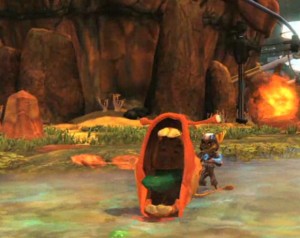 I love Ratchet and Clank. Full disclosure: These games just make me happy on a level that few games can. That being said A Crack in Time is not the best entry in the series, but it’s still more fun than 90% of the games out there.
I love Ratchet and Clank. Full disclosure: These games just make me happy on a level that few games can. That being said A Crack in Time is not the best entry in the series, but it’s still more fun than 90% of the games out there.
A Crack in Time takes place after Quest for Booty, the PSN exclusive released last year. The premise is that Ratchet and Clank are separated and Ratchet is trying to locate his robotic buddy. Clank was kidnapped by the Zoni, who were duped into it by Dr. Nefarious and his butler, Lawrence. Dr. Nefarious, you may remember, was the villain from Up Your Arsenal and he wants Clank so he can get into the Orvus Chamber, which will allow him to travel back through time and alter history. Clank’s origins are revealed in this game and we learn why he is the only one who can get into the Orvus Chamber.
Ratchet and Clank’s story is not really the main draw, but one thing must be said: it’s hilarious. The characters, from Dr. Nefarious to my personal favorite, Captain Qwark, all have moments that made me laugh out loud. The cutscenes are very well done, making the game look like a Pixar movie. In most games, I can barely pay attention during the cutscenes, but during this game, I was looking forward to them.
The gameplay is divided into a few sections. There is Ratchet’s traditional platforming/gunplay, which is always fun, especially for those who love collecting things. The planets you visit, while not as numerous as other installments, are varied and no two ever felt the same. The weapons you use during these areas are not as exciting as those that came before, but there are a few cool ones, like the gun that turns enemies into monkeys. Never got old. For fun, use the Groovetron to turn the monkeys into disco dancing freaks.
Once Ratchet gets his ship, right after the first planet, you will find yourself in an area of space with a few small planetoids that you can fly to and complete objectives in order to aquire Gold Bolts and Zoni, which unlock extra skins and upgrade your ship. These are pretty fun and are good for getting extra bolts to buy new weapons, but I grew tired of them after about 10 or so. They are round spheres that you walk over, which some have compared to Super Mario Galaxy, but was actually done first in an earlier Ratchet game, Going Commando. When Nintendo is cribbing from you, you must be doing something right.
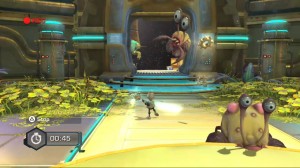 The final section is interspersed throughout the main narrative, which is Clank traveling through The Great Clock using a very inventive puzzle system. Clank’s sections have a little platforming and combat, but are mainly puzzle-based, which is a nice break from the constant explosions of the Ratchet sections. The puzzles involve Clank making copies himself to open doors and hit switches. For example, Clank stands on a time platform, starts recording and then walks to a switch on the floor and stand on it. The switch raises an elevator to a higher level. Next, you stop recording and return to the time platform. You stand on a different platform and record and play the recording you just made. The copy you just made walks over and raises the elevator while you walk over to the elevator and are taken to the top. This is just a simple example, as it gets much more complicated with up to 4 copies of Clank running around doing different things. The feeling of satisfaction I get from completing is something I have only felt while playing Portal, so I highly endorse this section of the game.
The final section is interspersed throughout the main narrative, which is Clank traveling through The Great Clock using a very inventive puzzle system. Clank’s sections have a little platforming and combat, but are mainly puzzle-based, which is a nice break from the constant explosions of the Ratchet sections. The puzzles involve Clank making copies himself to open doors and hit switches. For example, Clank stands on a time platform, starts recording and then walks to a switch on the floor and stand on it. The switch raises an elevator to a higher level. Next, you stop recording and return to the time platform. You stand on a different platform and record and play the recording you just made. The copy you just made walks over and raises the elevator while you walk over to the elevator and are taken to the top. This is just a simple example, as it gets much more complicated with up to 4 copies of Clank running around doing different things. The feeling of satisfaction I get from completing is something I have only felt while playing Portal, so I highly endorse this section of the game.
A Crack in Time is a step forward in some ways, a step back in others and simple stands still at other times. This series is so much fun though, I hesitate to say that it needs to be overhauled. The franchise has evolved into gaming comfort food. Kind of the way I look at the band Collective Soul. They aren’t going to blow you away, but you are going to get 12 songs that you will be humming for the next month, no doubt about it. I loved this game, but it’s not the next level in platforming goodness.
GamerSushi Grade:

How does our grading system work? Check out our grade chart!
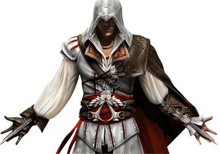 The first Assassin’s Creed was a love it or hate it affair. The game was, to be honest, a proof of concept more than anything else, a playground where Ubisoft could test out a really impressive graphics engine. The game rightly caught flack for its repetitive nature and the general silliness of its sci-fi overtones, but there were a lot of people out there who believed that the series had some merit. The game ended up selling fairly well, so the green light was given on the sequel.
The first Assassin’s Creed was a love it or hate it affair. The game was, to be honest, a proof of concept more than anything else, a playground where Ubisoft could test out a really impressive graphics engine. The game rightly caught flack for its repetitive nature and the general silliness of its sci-fi overtones, but there were a lot of people out there who believed that the series had some merit. The game ended up selling fairly well, so the green light was given on the sequel.
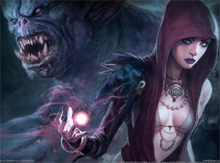 Dragon Age: Origins is the newest RPG epic from Bioware, creators of other notable titles such as Knights of the Old Republic, Jade Empire and Mass Effect. Their newest game takes things a little more old school, returning the quest programmers back to the days of yore, where dungeons waited to be crawled and dragons were there for the slaying. The studio has repeatedly said that Dragon Age: Origins was always a spiritual successor to Baldur’s Gate, and they weren’t kidding. But is it any good?
Dragon Age: Origins is the newest RPG epic from Bioware, creators of other notable titles such as Knights of the Old Republic, Jade Empire and Mass Effect. Their newest game takes things a little more old school, returning the quest programmers back to the days of yore, where dungeons waited to be crawled and dragons were there for the slaying. The studio has repeatedly said that Dragon Age: Origins was always a spiritual successor to Baldur’s Gate, and they weren’t kidding. But is it any good?
 Ok, I won’t write a cheesy intro paragraph about Modern Warfare 2. You know what this game is. I won’t even make a statement about how you have to have been hiding under a rock to not know. I think it’s safe to say that we’re all familiar with this game, its controversies, and some of its more publicized info leading up to the epic launch this week. This is without a doubt the biggest title to drop this year. So, with all of the hype, how did it stack up?
Ok, I won’t write a cheesy intro paragraph about Modern Warfare 2. You know what this game is. I won’t even make a statement about how you have to have been hiding under a rock to not know. I think it’s safe to say that we’re all familiar with this game, its controversies, and some of its more publicized info leading up to the epic launch this week. This is without a doubt the biggest title to drop this year. So, with all of the hype, how did it stack up?


 Shooter fans have been used to a very ridged structure in their games so far: you progress through levels, you shoot stuff, you move on. Sometimes you pick up different guns, but mostly it’s an aesthetic change than an actual improvement on your previous weapon, barring the rifle-bazooka trade-up.
Shooter fans have been used to a very ridged structure in their games so far: you progress through levels, you shoot stuff, you move on. Sometimes you pick up different guns, but mostly it’s an aesthetic change than an actual improvement on your previous weapon, barring the rifle-bazooka trade-up.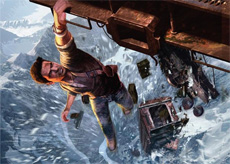 Unless you’ve been hiding under a rock for the last few months, you know that Uncharted 2 is the Playstation 3’s big great piece of hype, lying in wait to strike at just the right moment this holiday season. You also might know that the game is the object of a ridiculous amount of affection as gamers and reviewers alike swoon over its pixelated action. So, how does the game actually stack up? Let’s find out.
Unless you’ve been hiding under a rock for the last few months, you know that Uncharted 2 is the Playstation 3’s big great piece of hype, lying in wait to strike at just the right moment this holiday season. You also might know that the game is the object of a ridiculous amount of affection as gamers and reviewers alike swoon over its pixelated action. So, how does the game actually stack up? Let’s find out.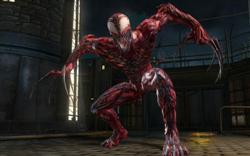
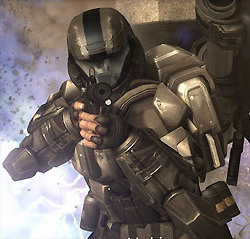
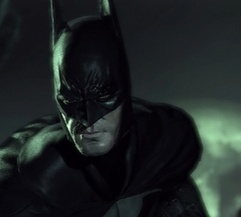
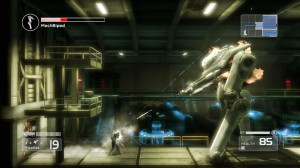 Alright, first things first: this is a review of the game itself. If you have anything political to say, please
Alright, first things first: this is a review of the game itself. If you have anything political to say, please 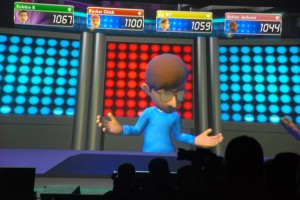 Hi folks. Just a quick introduction here… I’m Jeff, sometimes known as JJ, sometimes known as Unsquare. I’m the webmaster of the Smooth Few Films and Gamersushi sites. I’ve been getting back into gaming over the past year ever since I purchased myself an XBox 360, and I’ve been feeling the desire to contribute to this site a bit more now that I actually have opinions on games and such. Hopefully you’ll start seeing posts from me every once in a while. Can’t promise they’ll be as hilarious as Anthony’s Phantasy Star adventures, however.
Hi folks. Just a quick introduction here… I’m Jeff, sometimes known as JJ, sometimes known as Unsquare. I’m the webmaster of the Smooth Few Films and Gamersushi sites. I’ve been getting back into gaming over the past year ever since I purchased myself an XBox 360, and I’ve been feeling the desire to contribute to this site a bit more now that I actually have opinions on games and such. Hopefully you’ll start seeing posts from me every once in a while. Can’t promise they’ll be as hilarious as Anthony’s Phantasy Star adventures, however.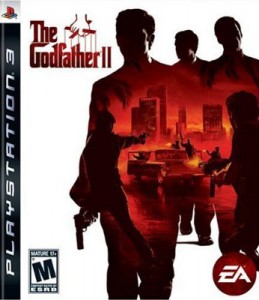
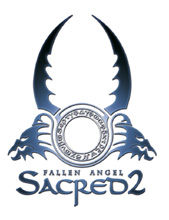 Several years ago, I played two great titles in a unique genre back-to-back. Over the course of a couple of months, I enjoyed these two gems in a co-op setting with friends back before co-op was the new kool-aid. These two discs were known as Baldur’s Gate 2: Dark Alliance and Champions of Norrath. They were hack-n-slash games. And they were brilliant.
Several years ago, I played two great titles in a unique genre back-to-back. Over the course of a couple of months, I enjoyed these two gems in a co-op setting with friends back before co-op was the new kool-aid. These two discs were known as Baldur’s Gate 2: Dark Alliance and Champions of Norrath. They were hack-n-slash games. And they were brilliant.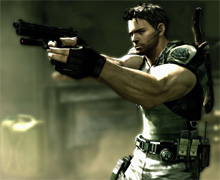 Every now and then in a generation, a game really comes along and surprises you. Just when you think that you won’t play another really great title for some time, something lands in your lap and is a joy to play again and again. Resident Evil 5 has been that game for me over the last few weeks.
Every now and then in a generation, a game really comes along and surprises you. Just when you think that you won’t play another really great title for some time, something lands in your lap and is a joy to play again and again. Resident Evil 5 has been that game for me over the last few weeks.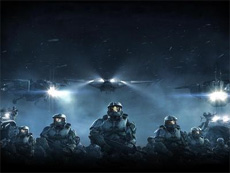 Halo Wars was first introduced back at X06 with all the hype and subtlety of a flash grenade blinding your senses. Since then, the FPS turned RTS game has seen numerous delays and revisions before finally hitting store shelves in March 2009. So, was it worth the wait? Did the game live up to the Halo brand? How well does this console RTS play? Let’s talk about that.
Halo Wars was first introduced back at X06 with all the hype and subtlety of a flash grenade blinding your senses. Since then, the FPS turned RTS game has seen numerous delays and revisions before finally hitting store shelves in March 2009. So, was it worth the wait? Did the game live up to the Halo brand? How well does this console RTS play? Let’s talk about that.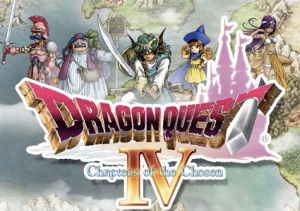 Before there was Final Fantasy, before there was Mass Effect, there was Dragon Quest (Dragon Warrior previously). Dragon Quest was the RPG that focused on gameplay, grinding and consistency. It left the cinematics and mind-blowing graphics to other JRPGs, focusing on creating a fun world to explore with awesome monster designs and old-school notions. It’s actually more popular in Japan than Final Fantasy is. Shocking, no?
Before there was Final Fantasy, before there was Mass Effect, there was Dragon Quest (Dragon Warrior previously). Dragon Quest was the RPG that focused on gameplay, grinding and consistency. It left the cinematics and mind-blowing graphics to other JRPGs, focusing on creating a fun world to explore with awesome monster designs and old-school notions. It’s actually more popular in Japan than Final Fantasy is. Shocking, no?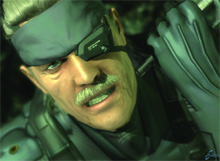 Ok, so Metal Gear Solid 4 came out last summer for the PS3, but some of us didn’t get a chance to finish the darn thing until recently, so sue me. I wanted to take some time away to reflect on finishing this epic saga that spanned multiple console generations, and review it without the hype of the story itself weighing me down.
Ok, so Metal Gear Solid 4 came out last summer for the PS3, but some of us didn’t get a chance to finish the darn thing until recently, so sue me. I wanted to take some time away to reflect on finishing this epic saga that spanned multiple console generations, and review it without the hype of the story itself weighing me down. 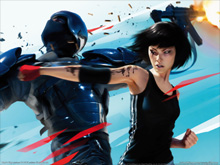 Last year, EA surprised much of the gaming world with several brand new titles that showed innovation and style, opening gamers up to the possibility that the company had turned over a new leaf. One of those titles was Mirror’s Edge, the first person platformer that puts you behind the eyes and in the shoes of Faith, a runner in a future dystopia. She climbs rooftops and leaps across alleys, and you control it all from her point of view.
Last year, EA surprised much of the gaming world with several brand new titles that showed innovation and style, opening gamers up to the possibility that the company had turned over a new leaf. One of those titles was Mirror’s Edge, the first person platformer that puts you behind the eyes and in the shoes of Faith, a runner in a future dystopia. She climbs rooftops and leaps across alleys, and you control it all from her point of view.